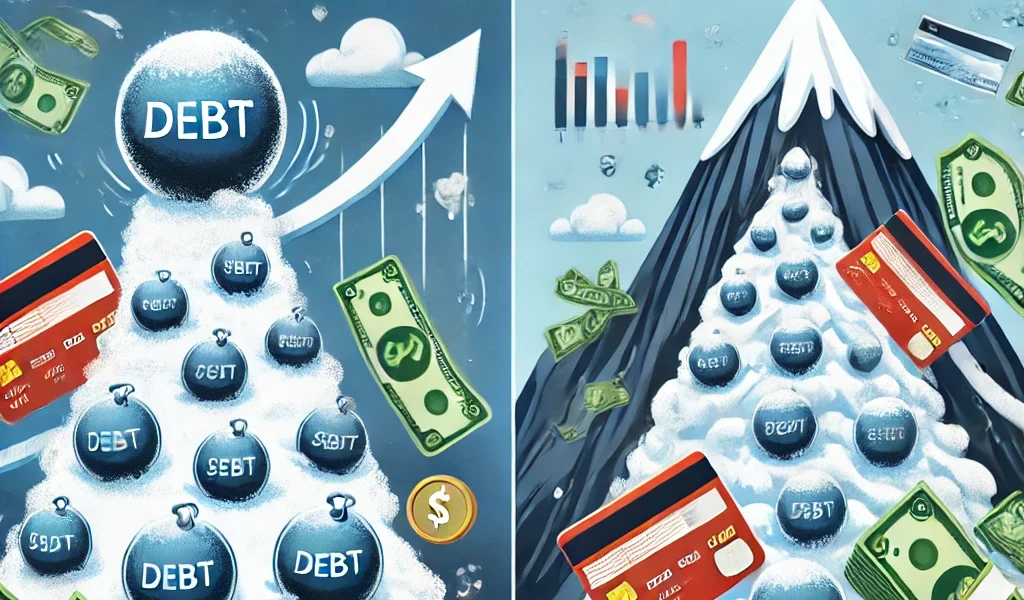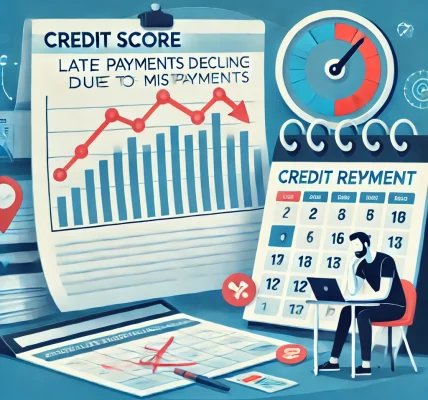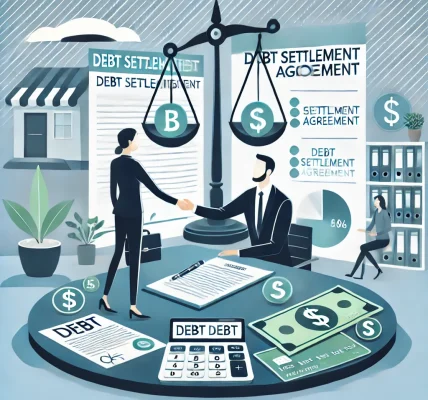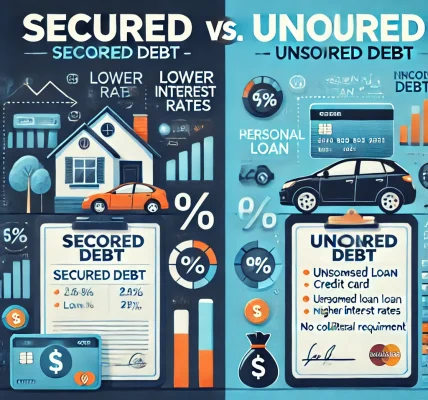Managing debt efficiently is crucial for achieving financial freedom. Two of the most popular debt repayment strategies are the Debt Snowball Method and the Debt Avalanche Method. While both methods help in eliminating debt, they follow different approaches. In this guide, we’ll explain how each method works, compare their benefits, and help you determine which strategy suits you best.
What Is the Debt Snowball Method?
The Debt Snowball Method, popularized by financial expert Dave Ramsey, focuses on paying off small debts first while making minimum payments on larger ones. The goal is to gain motivation by clearing smaller debts quickly, building momentum as you progress.
How the Debt Snowball Method Works:
- List all debts from smallest to largest, regardless of interest rates.
- Pay minimum payments on all debts except the smallest.
- Direct extra money toward paying off the smallest debt as quickly as possible.
- Once the smallest debt is cleared, move to the next smallest debt, adding the amount previously paid on the cleared debt.
- Continue this process until all debts are eliminated.
Example of the Debt Snowball Method:
| Debt Type | Balance | Minimum Payment | Order of Repayment |
|---|---|---|---|
| Credit Card 1 | $500 | $25 | ✅ First |
| Personal Loan | $2,000 | $100 | ✅ Second |
| Car Loan | $5,000 | $200 | ✅ Third |
| Student Loan | $10,000 | $250 | ✅ Last |
In this example, extra money goes toward paying off the $500 credit card first. Once it’s paid off, the money previously used for that debt is added to the next smallest balance ($2,000 loan), and the cycle continues.
Pros of the Debt Snowball Method:
✔ Psychological boost from small wins
✔ Builds momentum and motivation
✔ Simple and easy to follow
Cons of the Debt Snowball Method:
✖ May cost more in interest if high-interest debts are paid off last
✖ Takes longer if larger debts have higher interest rates
What Is the Debt Avalanche Method?
The Debt Avalanche Method focuses on paying off debts with the highest interest rates first, regardless of the balance. This method minimizes the total amount of interest paid over time, making it a more cost-effective strategy.
How the Debt Avalanche Method Works:
- List all debts from highest to lowest interest rate, regardless of balance.
- Pay minimum payments on all debts except the one with the highest interest rate.
- Direct extra money toward paying off the highest-interest debt first.
- Once the highest-interest debt is cleared, move to the next highest interest debt and continue the process.
Example of the Debt Avalanche Method:
| Debt Type | Balance | Interest Rate | Minimum Payment | Order of Repayment |
|---|---|---|---|---|
| Credit Card 2 | $3,000 | 24% | $75 | ✅ First |
| Credit Card 1 | $500 | 18% | $25 | ✅ Second |
| Student Loan | $10,000 | 6% | $250 | ✅ Third |
| Car Loan | $5,000 | 4% | $200 | ✅ Last |
In this example, the $3,000 debt with 24% interest is paid off first, saving money in interest payments. The amount used for this debt is then redirected to the next highest-interest debt (18%).
Pros of the Debt Avalanche Method:
✔ Saves money by minimizing interest payments
✔ Faster debt payoff in the long run
✔ More financially efficient
Cons of the Debt Avalanche Method:
✖ May take longer to see progress
✖ Requires discipline and patience
Debt Snowball vs. Debt Avalanche: Which Is Right for You?
Both methods are effective, but the best choice depends on your financial situation and personal preferences.
| Feature | Debt Snowball Method | Debt Avalanche Method |
|---|---|---|
| Approach | Pays smallest debts first | Pays highest-interest debts first |
| Best For | People who need motivation | People focused on saving money |
| Psychological Benefit | High – quick wins build confidence | Lower – takes longer to see progress |
| Total Interest Paid | Higher | Lower |
| Debt-Free Timeline | Can take longer | Generally faster |
Choose the Debt Snowball If:
✔ You need motivation from small wins
✔ You like seeing quick results
✔ You struggle with sticking to a debt plan
Choose the Debt Avalanche If:
✔ You want to save the most money
✔ You can stay disciplined without immediate results
✔ You have large debts with high interest
Can You Combine Both Methods?
Yes! Some people start with the Debt Snowball to gain momentum, then switch to the Debt Avalanche to save on interest. This hybrid approach can offer both motivation and financial efficiency.
Tips for Successful Debt Repayment
Regardless of which method you choose, these tips can help accelerate your journey to a debt-free life:
✅ Create a Budget – Track income and expenses to find extra funds for debt repayment.
✅ Cut Unnecessary Expenses – Reduce spending on non-essential items.
✅ Increase Income – Consider a side hustle, freelancing, or overtime work.
✅ Automate Payments – Set up automatic payments to avoid missed due dates.
✅ Negotiate Interest Rates – Ask creditors for lower interest rates or balance transfers.
✅ Avoid New Debt – Resist the temptation to take on new credit.
Final Thoughts
Both the Debt Snowball and Debt Avalanche methods are effective strategies for eliminating debt. The best choice depends on whether you prioritize quick motivation (Snowball) or saving the most money (Avalanche).
Key Takeaways:
✔ Debt Snowball is great for motivation but costs more in interest.
✔ Debt Avalanche saves money but requires patience and discipline.
✔ A hybrid approach can provide both motivation and financial benefits.
✔ Consistency and commitment are key to becoming debt-free.




